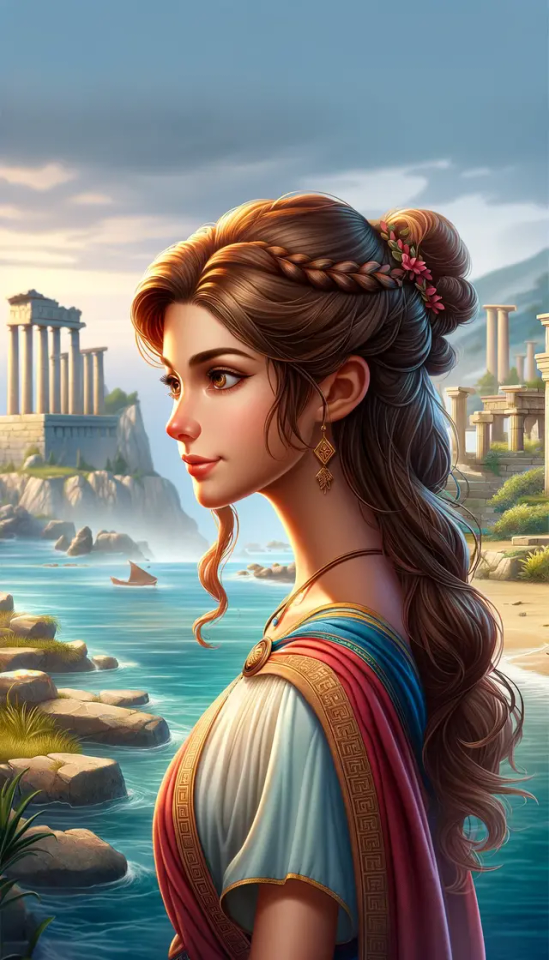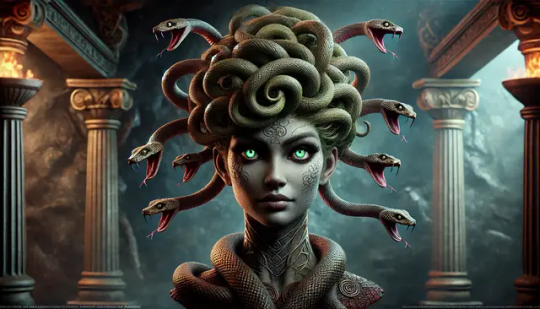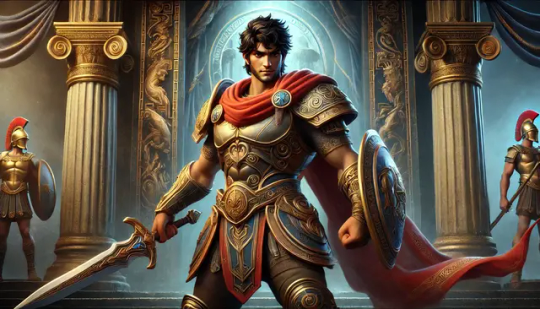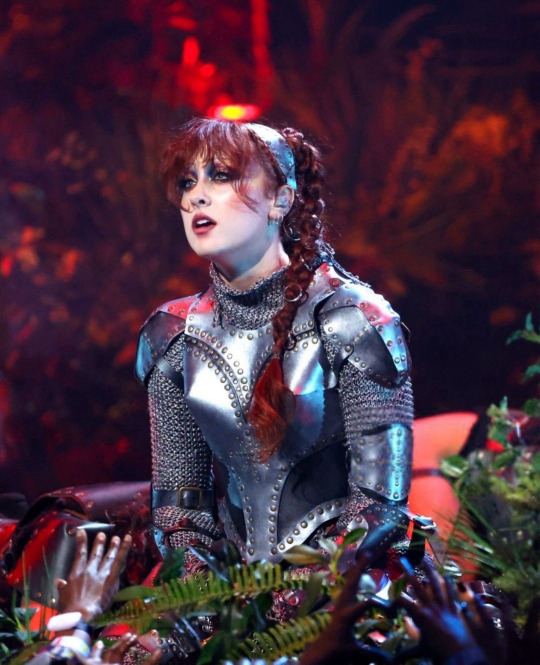#Cultural influence
Explore tagged Tumblr posts
Text

Dutch painter George Hendrik Breitner's "Girl in a White Kimono" (1894)
Geesje Kwak, a 16-year-old housemaid, draped in a Japanese kimono.
if you're interested in purchasing products depicting this work please click here
#George Hendrik Breitner#Girl In A White Kimono#Amsterdam Impressionism#Art History#Japonism#Cultural Exchange#Dutch Art#European Art#19th Century Art#Fine Arts#Oil Painting#Artistic Inspiration#Cultural Influence#Art Appreciation#Dutch Painter#Geesje Kwak
23 notes
·
View notes
Text
youtube
The Fascination and Terror of Medusa: A Journey into Greek Mythology (Roman version)
Introduction to the Legend of Medusa
Medusa is one of the most fascinating and terrifying figures in Greek mythology. Known as one of the three Gorgons, Medusa is the only mortal among her sisters, Stheno and Euryale. Her most notable representation is that of a woman with snakes in place of hair, capable of turning anyone who meets her gaze to stone. The legend of Medusa has spanned centuries, influencing art, literature, and popular culture.
According to mythology, Medusa was not always a monstrous creature. Originally, she was a beautiful young woman, a priestess in the temple of Athena. However, her beauty attracted the attention of Poseidon, the god of the sea, who seduced her in the sacred temple. This sacrilegious act aroused Athena's wrath, who, to punish Medusa, transformed her into a monster. Her snake hair and petrifying power are the result of this transformation, which forever altered her fate.
Medusa is a complex figure rich in symbolism. On one hand, she represents beauty and innocence corrupted by violence; on the other, she embodies female power and vengeance. Her image has inspired numerous works of art, from ancient Greek amphorae to Renaissance paintings, and modern cinematic interpretations. Medusa continues to evoke interest and fear, remaining one of the most enigmatic and powerful figures in Greek mythology. Her legend is a powerful tale of transformation, punishment, and ultimately, resilience.

The Origins of Medusa

The origins of Medusa are deeply rooted in Greek mythology, where beauty and tragedy intertwine in a captivating and complex story. Initially, Medusa was not the monstrous creature everyone knows but a beautiful young woman known for her extraordinary beauty. She was one of the three Gorgons, daughters of the sea deities Phorcys and Ceto. Unlike her sisters Stheno and Euryale, who were immortal, Medusa was mortal.
Medusa became a priestess in the temple of Athena, the goddess of wisdom and war, requiring a vow of chastity and devotion. However, her life took a dramatic turn when Poseidon, irresistibly attracted by her beauty, seduced her in Athena's temple, an act of great sacrilege. Athena, furious at the desecration of her sanctuary, transformed Medusa into a monster. Her beautiful hair was turned into venomous snakes, and anyone who met her gaze would be immediately turned to stone. This radical transformation not only punished Medusa but isolated her from the world, making her a figure of terror.
Medusa's punishment can be interpreted in various ways. Some see Athena as a goddess who protected her temple and punished the violation of its sanctity. Others view the punishment as a symbol of divine anger and vengeance against corrupted innocence. Medusa's story reflects the complexities of relationships between mortals and gods, and the cruel irony of her fate continues to provoke discussions among scholars and mythology enthusiasts.
Despite her transformation into a monster, Medusa remains a tragic and captivating figure. Her story highlights universal themes of beauty, power, punishment, and redemption, making her one of the most intriguing figures in Greek mythology. Over the centuries, Medusa has become a powerful symbol, whose legend continues to inspire and frighten, representing an important chapter in the rich tapestry of Greek mythology.
The Transformation of Medusa: From Beautiful Priestess to Monster

The transformation of Medusa from a beautiful priestess to a petrifying monster is one of the most famous metamorphoses in Greek mythology, laden with symbolic and moral meanings. Originally, Medusa was a beautiful young woman known for her extraordinary beauty. As a priestess of Athena, she was bound by a vow of chastity, devoutly serving the goddess of wisdom and war in her temple. Her life took a dramatic turn when she caught the attention of Poseidon, the god of the sea.
Poseidon, captivated by Medusa's beauty, seduced her in Athena's temple, a sacrilegious act that violated the sanctity of the place. Athena, enraged by the desecration of her temple, transformed Medusa into a monster, drastically altering her physical appearance and marking her future existence.
Medusa's metamorphosis was complete: her beautiful hair was turned into venomous snakes, and her gaze became so powerful that it could turn anyone to stone. This new aspect made Medusa a feared and isolated figure, relegated to the fringes of the known world. Her transformation is rich in symbolism: snakes, often associated with wisdom and rebirth, here become emblems of terror and death, while her petrifying gaze represents the paralyzing effect of fear.
This punishment can also be seen as a critique of female beauty and its perception in society. Medusa, once admired for her beauty, became a monster because of the very quality that made her special. The myth can be interpreted as a reflection on the fragility of beauty and its potential to provoke envy and destruction.
Despite her terrible transformation, Medusa remains a tragic figure, symbolizing corruptible beauty and the power of divine vengeance. Her story continues to be told and reinterpreted, an eternal reminder of the power of the Greek gods and the consequences of transgressions in their capricious and merciless world.
Medusa and Perseus: The Hero and the Monster

Medusa's story is inextricably linked with that of Perseus, one of the most famous heroes in Greek mythology. Their legend, rich in adventures and twists, tells of courage, cunning, and divine interventions, culminating in one of the most iconic battles between a hero and a monster.
Perseus was the son of Danae and Zeus, conceived under extraordinary circumstances. Danae had been imprisoned in a bronze tower by her father, Acrisius, king of Argos, due to a prophecy that foretold he would be killed by his grandson. However, Zeus, transforming into a shower of gold, reached Danae and made her the mother of Perseus. When Acrisius discovered his grandson's birth, he locked Danae and Perseus in a chest and cast them into the sea. The two survived and were taken in on the island of Seriphos.
Here, Perseus grew up to be a brave young man. His adventure began when the king of Seriphos, Polydectes, who was in love with Danae, sought to get rid of Perseus by sending him on an apparently impossible mission: to bring back the head of Medusa, the most fearsome of the Gorgons. Perseus accepted the challenge and received divine assistance for the task.
Athena and Hermes, the gods who protected heroes, provided Perseus with essential tools: a reflective shield, an adamantine sickle, winged sandals, a kibisis (a magical bag), and Hades' helm, which rendered him invisible. With these gifts, Perseus traveled to the land of the Gorgons.
Medusa lived with her sisters in a remote and inaccessible place. Perseus, using the reflective shield to avoid her petrifying gaze, approached Medusa while she slept and, with a precise stroke of the sickle, decapitated her. From Medusa's mortal wound sprang two extraordinary creatures: the winged horse Pegasus and the giant Chrysaor, symbols of beauty and power emerging from chaos and destruction.
Perseus not only succeeded in his mission but also used Medusa's head as a weapon, exploiting its petrifying power on numerous occasions. Eventually, he gave the head to Athena, who placed it on her shield, the aegis, as a symbol of protection and terror.
The story of Perseus and Medusa is rich in symbolic meanings. Perseus represents the archetypal hero, capable of overcoming impossible challenges through courage, cunning, and divine help. Medusa, on the other hand, embodies terror and corrupted beauty, a creature who, despite being a victim, becomes an instrument of destruction.
This legend continues to be an inexhaustible source of inspiration in culture, art, and literature, reminding us of the complex dynamics between heroes, monsters, and gods in the fascinating world of Greek mythology.

Symbolic Interpretations of Medusa
Medusa is a character steeped in symbolism, with interpretations varying over time and cultures. In Greek mythology, she represents divine punishment and the transformation from beauty to monstrosity, a reflection on the fragility of beauty and the destructive power of divinity. Her ability to petrify with her gaze can be seen as a metaphor for the paralyzing power of fear and terror. In psychological terms, Medusa can be interpreted as a symbol of repressed female power and vengeance. Carl Jung, the Swiss psychologist, saw Medusa as an archetype of the "terrifying mother" and female destructive power. In contemporary culture, Medusa is often revisited as an emblem of resilience and female strength, an icon of empowerment challenging traditional gender roles.
Medusa's Influence in Popular Culture
Medusa's influence in popular culture is vast and enduring, spanning literature, art, cinema, and fashion. In literature, she has appeared in works by authors such as Ovid and Dante, continuing to inspire contemporary writers. In art, her image has been immortalized by artists like Caravaggio and Rubens. Cinema and television have repeatedly revisited the myth of Medusa, with interpretations ranging from epic films like "Clash of the Titans" to TV series and video games. Fashion has adopted Medusa's iconography, with the brand Versace using her head as its logo, symbolizing beauty, power, and mystery. Medusa continues to be a powerful cultural symbol, capable of evoking strong emotions and stimulating deep reflections on human nature and society.
#athena#cultural influence#Gorgons#Greek Mythology#medusa#Perseus#Poseidon#symbolism#mythology#youtube#digital art#fantasy#videos#folklore#mythical creatures#Youtube
8 notes
·
View notes
Text
Just one-quarter of the world population is responsible for nearly three-quarters of emissions. The authors suggest the best strategy to counter overshoot would be to use the tools of the marketing, media and entertainment industries in a campaign to redefine our material-intensive socially accepted norms. “We’re talking about replacing what people are trying to signal, what they’re trying to say about themselves. Right now, our signals have a really high material footprint –our clothes are linked to status and wealth, their materials sourced from all over the world, shipped to south-east Asia most often and then shipped here, only to be replaced by next season’s trends. The things that humans can attach status to are so fluid, we could be replacing all of it with things that essentially have no material footprint – or even better, have an ecologically positive one.” The Merz Institute runs an overshoot behaviour lab where they work on interventions to address overshoot. One of these identifies “behavioural influencers” such as screenwriters, web developers and algorithm engineers, all of whom are promoting certain social norms and could be working to rewire society relatively quickly and harmlessly by promoting a new set of behaviours. The paper discusses the enormous success of the work of the Population Media Center, an initiative that creates mainstream entertainment to drive behaviour change on population growth and even gender violence. Fertility rates have declined in the countries in which the centre’s telenovelas and radionovelas have aired.
24 notes
·
View notes
Text
Botticelli’s Map of Hell
Our modern vision of hell is deeply rooted in the literary and artistic works of the past, with one of the most significant contributions being Sandro Botticelli’s Map of Hell. This masterpiece, created approximately 700 years ago, offers a visual representation of the infernal realms as imagined by Dante Alighieri in his epic poem, "The Divine Comedy." The symbiotic relationship between Dante's literary creation and Botticelli's artistic interpretation has profoundly influenced how we perceive hell even today.

Dante Alighieri, an Italian poet, writer, and philosopher, penned "The Divine Comedy" in the early 14th century. The poem is divided into three parts: Inferno (Hell), Purgatorio (Purgatory), and Paradiso (Paradise). In Inferno, Dante embarks on a harrowing journey through the nine circles of hell, guided by the Roman poet Virgil. Each circle represents a different sin and its corresponding punishment, meticulously detailed by Dante’s vivid imagination and profound theological insights.
Dante’s vision of hell was revolutionary. It combined classical mythology, Christian theology, and medieval philosophy, creating a complex and terrifying afterlife landscape. His work not only reflected the religious beliefs of his time but also influenced future generations' understanding of sin, punishment, and the moral consequences of earthly actions.
About 150 years after Dante’s death, Sandro Botticelli, a renowned Renaissance painter, undertook the ambitious project of illustrating "The Divine Comedy." Among his works, the Map of Hell stands out as a detailed and haunting depiction of Dante’s infernal realms. Botticelli’s illustration, created around 1480, serves as a visual guide to the intricate and layered structure of hell described by Dante.
Botticelli’s Map of Hell is a parchment drawing that meticulously outlines the descending circles of hell, each with its unique torments and sinners. The precision and detail in Botticelli’s work capture the essence of Dante’s narrative, making the abstract horrors of hell more tangible and accessible to the viewers. His ability to convey the emotional and physical anguish of the damned souls adds a visceral quality to Dante’s literary vision.
The collaboration between Dante’s literary genius and Botticelli’s artistic mastery has had a lasting impact on our cultural and religious conception of hell. Even today, many of the common images and ideas associated with hell—such as fire and brimstone, eternal torment, and the hierarchical structure of punishments—can be traced back to Dante’s Inferno and Botticelli’s Map of Hell.
Modern depictions of hell in literature, art, and popular culture often draw inspiration from these medieval works. Whether in horror films, graphic novels, or theological discussions, the influence of Dante and Botticelli is unmistakable. Their portrayal of hell as a place of moral reckoning and divine justice continues to resonate with contemporary audiences, reflecting enduring questions about sin, punishment, and redemption.
Sandro Botticelli’s Map of Hell, based on Dante Alighieri’s "The Divine Comedy," remains a cornerstone of our understanding of the infernal realms. The interplay between Dante’s poetic vision and Botticelli’s artistic interpretation has shaped our collective imagination, defining hell for over seven centuries. As we continue to explore and reinterpret these works, their profound impact on our perception of the afterlife endures, reminding us of the power of art and literature to shape our deepest beliefs and fears.
#Dante Alighieri#Sandro Botticelli#The Divine Comedy#Inferno#Map of Hell#Medieval literature#Renaissance art#Hell#Dante's Inferno#Religious art#Christian theology#Historical art#Literary classics#Art history#Dante and Botticelli#Cultural influence#Depictions of hell#Dante's circles of hell#Artistic interpretation#Moral consequences#today on tumblr#new blog
8 notes
·
View notes
Text
Dev Amil Recognizes the Power of Time as His Most Precious Asset for 202
In the ever-evolving landscape of hip-hop, a fresh voice emerges, carrying with it the weight of history and the promise of tomorrow. Dev Amil, a rising star in the rap cosmos, stands at the precipice of 2025, acutely aware that his most valuable resource isn’t measured in dollars or streams, but in the ticking seconds of time itself. As we delve into the world of this enigmatic artist, we…
#ALL MONEY IS LEGAL#cultural influence#Dev AMIL#Entrepreneur#Generation Z#hip hop#Music Industry#New York rap#RADIOPUSHERS#rap culture#Recording Artist#self-made#Street Dreams
4 notes
·
View notes
Text
Dunno who all needs to hear it, but a reason two historical people had a lot of opinions or ideas in common is because they were literally contemporaries with each other and both were swimming around in the same socio-environmental soup.
"They never read each other's works" - it literally does not matter. They would have been exposed to common influences. It's also possible one or both of them was influenced by the other indirectly; EG, a writer who never read a specific occultist's work might have picked up some of their ideas from another writer who did read that occultist's work.
And yes, I am writing this because I came across a dipshit who refuses to believe that a reason Lovecraft and Crowley had similar ideas in their writings might have something, anything to do with the fact that they were contemporaries swimming around in the same socio-environmental soup.
39 notes
·
View notes
Text
Celebrating Rap Music Day: Honoring the Rhythm, Rhymes, and Culture of Hip-Hop 🎤🔥
Happy Rap Music Day! 🎤🔥 Celebrate the rhythm, rhymes, and culture of rap music. Create your own rap, host a listening party, or explore the genre’s history. Here’s to the power of rap! #RapMusicDay #HipHopCulture
Introduction Happy Rap Music Day! 🎤🔥 Celebrated annually on August 2nd, Rap Music Day is a special occasion dedicated to honoring the powerful influence of rap music and its profound impact on culture, society, and the music industry. From its roots in the streets of New York City to becoming a global phenomenon, rap music has transformed the way we express ourselves and tell our stories. Today,…
#Creativity#cultural influence#hip-hop culture#music celebration#rap artists#rap history#rap lyrics#rap music#Rap Music Day#Tupac Shakur
3 notes
·
View notes
Text

c. 1760
2 notes
·
View notes
Text
The Impact of Film and Video on Society
Film and video have profoundly impacted society in various ways, shaping culture, politics, social behavior, and individual identity. Here are some key effects:
1. Cultural Influence:
Storytelling and Shared Narratives: Films and videos serve as powerful storytelling tools that create shared cultural narratives. They convey societal values, norms, and ideals, influencing how people perceive the world and their place within it.
Globalization of Culture: The global distribution of films and videos has facilitated the spread of cultural ideas across borders, promoting cultural exchange but also raising concerns about cultural homogenization and the dominance of certain cultures over others.
2. Social and Political Impact:
Awareness and Advocacy: Films and documentaries have been instrumental in raising awareness about social and political issues, from civil rights movements to environmentalism. They can mobilize public opinion and inspire activism.
Propaganda and Persuasion: Throughout history, films have also been used as tools of propaganda, shaping public opinion and reinforcing political ideologies, particularly during times of war or political unrest.
3. Behavior and Social Norms:
Shaping Social Norms: Film and video often depict societal norms, behaviors, and expectations, influencing how individuals perceive gender roles, relationships, and other social constructs. This can reinforce stereotypes or challenge them, depending on the content.
Consumer Behavior: Advertising through video content has a significant impact on consumer behavior, influencing buying decisions and popularizing trends.
4. Identity and Representation:
Representation of Diversity: Film and video provide platforms for representing diverse identities, including different races, genders, sexual orientations, and cultures. Positive representation can foster inclusivity and self-acceptance, while negative or stereotypical portrayals can perpetuate prejudice.
Identity Formation: Individuals often see themselves reflected in film and video, influencing their identity formation and how they relate to others in society. This is particularly impactful for marginalized communities seeking representation.
5. Education and Information:
Educational Content: Films and videos are widely used as educational tools, providing accessible and engaging ways to learn about history, science, and other subjects. Visual storytelling can enhance understanding and retention of information.
Misinformation: On the downside, the spread of video content also facilitates the dissemination of misinformation, especially in the digital age, where videos can go viral without verification.
6. Technological and Artistic Innovation:
Artistic Expression: Film and video have expanded the possibilities for artistic expression, combining visual, auditory, and narrative elements to create new forms of art. This has led to the development of various film genres, styles, and techniques.
Technological Advancements: The evolution of film and video technology has driven innovation in both the arts and other fields, from CGI in movies to virtual reality experiences that blur the line between fiction and reality.
7. Social Connectivity and Communication:
Social Media and Video Content: The rise of platforms like YouTube, TikTok, and Instagram has democratized video production, allowing individuals to create and share content widely. This has revolutionized how people communicate, share information, and build communities online.
Impact on Attention Span: The proliferation of short-form video content, particularly on social media, has raised concerns about its impact on attention spans and the quality of discourse.
8. Economic Impact:
Entertainment Industry: The film and video industry is a significant economic driver, creating jobs and generating revenue globally. It also influences tourism, fashion, and other industries.
Piracy and Intellectual Property: The digital distribution of films and videos has also led to challenges with piracy, affecting the economic model of the entertainment industry.
9. Psychological and Emotional Impact:
Emotional Engagement: Films and videos have the power to evoke strong emotional responses, from joy and laughter to fear and sadness. This emotional engagement can have therapeutic effects or, conversely, contribute to emotional desensitization.
Escapism and Coping Mechanism: For many, watching films or videos serves as a form of escapism, providing a temporary reprieve from the stresses of everyday life and offering a means of coping with personal challenges.
10. Ethical and Moral Reflection:
Moral Dilemmas: Films often explore complex moral dilemmas, prompting viewers to reflect on their values and beliefs. This can lead to greater empathy and ethical consideration in real-life situations.
Impact on Violence and Behavior: The portrayal of violence in films and videos has sparked debates about its potential influence on behavior, particularly among young audiences, leading to discussions about censorship and responsible media consumption.
Film and video have transformed society by shaping culture, influencing behavior, driving technological innovation, and providing new ways to communicate and express ideas. While they offer significant benefits in education, entertainment, and social awareness, they also pose challenges related to representation, misinformation, and ethical considerations. As these mediums continue to evolve, their impact on society will likely grow, further intertwining with our daily lives and collective consciousness.
#philosophy#epistemology#knowledge#learning#education#chatgpt#psychology#Film and Society#Cultural Influence#Social Impact#Media Representation#Political Propaganda#Identity Formation#Educational Media#Technological Innovation#Social Media#Consumer Behavior#Entertainment Industry#Misinformation#Psychological Impact#Moral Reflection#Video Content#Globalization of Culture#Artistic Expression#Media Ethics#Attention Span
1 note
·
View note
Text
Exploring Magical Realism in Literature: Blurring Reality and Fantasy
Within the vast landscape of literature, where words are both colors and brushes, the genre of magical realism emerges as a unique and enchanting tapestry. It’s a genre that possesses the alchemical power to blur the boundaries between reality and fantasy, allowing the extraordinary to dance with the ordinary. In this exploration, we dive into the enchanting realm of magical realism, uncovering…
View On WordPress
#Blurring Reality and Fantasy#Cultural Influence#Cultural Roots#Genre Exploration#Literary Genres#Literary Magic#Literature Genres#Luminous Ordinary#Magical Elements#Magical Realism#Narrative Blending#Narrative Techniques#Reader Engagement#Symbolic Magic#Symbolism in Fiction#Unique Storytelling#Writing Craft#Writing Tips
3 notes
·
View notes
Text
Yeah, this isn’t anything new. It’s just people reciting/quoting something. This has been a thing for literal decades
(I’m going to use examples that may be specific to the US as that’s the country I live in)
People in the 80’s would say “I’ll be back” in Arnold Schwarzenegger’s voice (Terminator). The 2010s had kids saying “Zoo-we-mama!” (Diary of a Wimpy Kid). The phrase “Let’s split up gang!” has been around and quoted throughout generations (Scooby Doo).
“Chat, is this real?” isn’t any different. After all, it’s media, like what the aforementioned quotes were from, just in a new, different format. (Things like streaming and YouTube videos are professionally called “new media.”)
This phenomenon isn’t anything new; it’s the same thing, only with different, newer roots
Cultural influences don’t just influence adults, they also influence younger people. The phrase “Chat, is this real?” perfectly exemplifies this
TLDR: Phrases being “baked into [kids’] speech patterns” isn’t anything new; kids are just quoting/reciting popular phrases, something that adults also do with popular phrases. This phenomenon has been around for quite some time

#also: ‘chat’ is in reference of the twitch or youtube chat which consists of a group of people#therefore ‘chat’ is referring to a group. ‘chat’ is a noun#also no. children are not having ‘reality breaks’ because they are saying ‘chat’ as they are quoting/referencing something#language#culture#internet culture#cultural influence#long post#mint mumbles
138K notes
·
View notes
Text










chappell roan & gerard way stage outfit parallels
chappell looks:
vmas, sept 11 2024 / hinterland, august 4 2024 / bonnaroo, june 16 2024 / hangout fest, may 18 2024 / coachella, april 12 2024
gerard looks:
corona capital mexico, nov 18 2022 / london, nov 2005 / detroit, sept 13 2022 / los angeles, oct 11 2022 (but first worn in nashville, aug 23 2022) / sydney, march 19-20 2023
PART 1/2
#chappell roan#gerard way#what happens when you are inspired/influenced by drag culture#vmas#my chemical romance#mcr
22K notes
·
View notes
Text
Abandon God, and He'll Abandon You: A Warning for Individuals and Nations
The WarningAbandoning God comes with grave consequences, not just for individuals but for entire nations. Scripture gives us a chilling picture of what happens when humanity rejects Him. Romans 1 warns us of the devastating trade-off: exchanging the truth of God for lies. When people or nations dismiss His authority and refuse to acknowledge Him, God allows them to follow their own path—a path…
#abandoning God#cultural influence#divine mercy#God&039;s warnings#hope in God#Intercession#Moral decay#national judgment#personal faith#prayer for revival#Repentance#restoration#returning to God#revival#spiritual awakening#spiritual consequences#spiritual renewal#truth and lies#turning to God
0 notes
Text
Black Culture: The Real Trendsetter in Fashion History
Black culture has always been the ultimate trendsetter. From the streets to the runway, let’s celebrate the trailblazing designers and iconic moments that continue to shape fashion. #BlackFashion #Trendsetter #BlackOwnedBrands #Streetwear #FierceCulture #FierceMillennial
#Black culture#Black-owned brands#cultural influence#designers#fashion#FIERCE CULTURE#FIERCE MILLENNIAL#history#streetwear#style#trends
1 note
·
View note
Text
I'm imagining former Jedi finding the whole 'personal property' thing bewildering on MULTIPLE levels.
They lived with like ten thousand roommates. Everyone had their laser-sword which was mystically bonded to their soul and part of their luminous self. But everything else? Everyone sits together and eats off each other's plates. Tea-sets just wander through the Temple room by room. There's money jars that everyone puts credits in and takes credits out for whatever. They never seem to run dry. A cloak can go from Mace Windu to Shaak Ti to Nico Diath to be lost by Obi Wan Kenobi and damnit that was Eeth Koth's old cloak!
And there's the morality side Jedi were taught. Stuff like not being too attached to physical things. I can definitely see them taking the 'sharing is caring' to the next level. No personal toys just a huge chest full of games and puzzles and dolls passed down the creche clans and generations.
Capitalism must be such a huge learning curve.
Y’all Remember Ahsoka was Raised as a Jedi Right? Right?
Many things bother me but one of them is depictions of Ahsoka that act like she wasn’t raised as a Jedi for her entire childhood.
Idc if she left, or a was a “rebel” (and she really wasn’t) she is still emotionally regulating via regular meditation, still remembers her crèchemates and crèchemaster as the central elements of her childhood, still can never smother that deadly drive for compassion in all things.
Its the difference between seeing culture as a costume you can put on or take off, and seeing culture as what it is: the shared knowledge which shapes every aspect of our lives in ways we often do not even realize.
“But we’re never told who her crèchemates or crèchemaster were so I can’t write about them”
Skill issue. Literally a skill issue. Failure of imagination. Failure to look up namegenerator.com.
“But she likes fighting”
And? So do Obi-Wan and Mace. She learns multiple times why it’s important to temper her desire to solve everything quickly by fighting.
“But Anakin is her dad and Padme is her mommy and she wanted a trad family”
Well she met Anakin as a teenager and knew him for 2 years, whilst having several other much older adults in her life as well, and doesn’t treat Anakin as a father at all. Older brother is the closest analogue to our words, and the only useful label is ‘Jedi Master of unusually close age’. And she like, talked to Padme a couple times, mostly in professional capacities. Also at no point in any media I’ve heard of does she express a desire for any kind of nuclear family, parents, a romantic relationship, or to raise a kid of her own. Years removed from the jedi, she ends up taking a student. Not quite a padawan, but a lot more like a padawan than a child (in the sense of son/daughter/etc)
“But she left!!!!!!!”
Cool. Yeah. Leaving the place you were raised in and people you were raised with immediately removes all of the ways those things shaped you, everyone knows that. Get out
But seriously, even if you want her to leave, think it was the best decision she ever made (I, personally, have a decent argument that leaving was in that moment a far more mature and interesting decision for her than accepting knighthood would’ve been, and it had excellent narrative potential we’ll ignore whatever came after that in tcw, rebels, etc) she should still have a complicated relationship to the culture she was raised in. Something she misses about living there, some negative culture shock to living in another culture, people she misses other than Plo or Anakin. Making her into a caricature who thinks “meditation is boring and stupid” and some such nonsense, is not doing your argument any favours.
#ahsoka tano#star wars#clone wars#Jedi#Yes!#Exactly#Culture#Cultural influence#You think you got rid of yours?#I have a bitter laugh for you
382 notes
·
View notes
Text
Famous Photographers Shaping Modern Culture
AI-Generated Image Introduction: In an era where photography has become more accessible than ever, certain photographers stand out for their ability to capture the essence of modern culture. These artists have redefined photography by pushing the boundaries of visual storytelling, blending art with activism, and bringing attention to pressing social issues. This article explores some of the…
#Annie Leibovitz#Annie Leibovitz: The Master of Celebrity Portraiture#Art and Culture#book-review#book-reviews#books#Capturing the Intimate and Raw#Cindy Sherman#Cindy Sherman: The Queen of Conceptual Photography#Contemporary Art#Contemporary Photography#Cultural Icons#Cultural Influence#Digital photography#Famous Photographers#Famous Photographers Shaping Modern Culture#Fashion Photography#Fine Art Photography#Free#History of Photography#Iconic Photography#Impact on Society#Influential Artists#Influential Photographers#JR#JR: Merging Art and Activism with Large-Scale Installations#Modern Culture#Nan Goldin#Photography#Photography Icons
1 note
·
View note